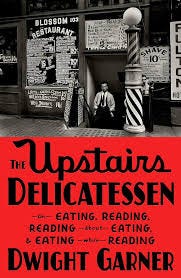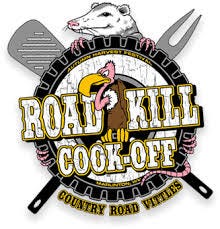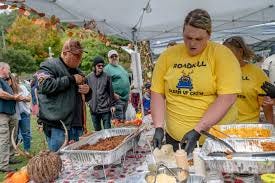Food Meets Literature in The Upstairs Deli
On EATING, Reading; READING about EATING, & EATING while READING
Many of you reading this are just like me: eating and reading are two of our favorite things in the whole wide world. So when a poet/friend in Pasadena (She's also no stranger to words or recipes) gifted me a book about the delights of eating and reading, I placed it on top of my pile. The Upstairs Delicatessen by Dwight Garner is one of the wittiest, most cheerful little book I've read in a long time.
Dwight Garner is the beloved book critic for the New York Times. Before that he was Senior Editor for the New York Times Book Review, so it goes without saying he's pretty well read. Now many grumpy writers have said that ‘people who review books are people who can't write books’, or something like that. With Upstairs Delicatessen, Garner proves that he's quite capable of being both reviewer and author at the same time.
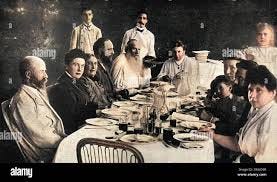
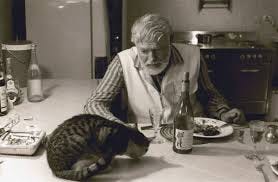
Upstairs Delicatessen brings literature and food together as nobody has before. There's not really a linear story here. The structure of the book is a loosely assembled memoire of Garner’s eating and reading life, an autobiographical journey chronicling the many ways that food, eating and drinking, and clever words came together in the course of his life. What follows is an assemblage of hundreds upon hundreds of anecdotes, pithy asides, and culinary and literary references. And if you're at all familiar with some of the hundreds of writers he quotes (and you will be) or know some of the dishes and establishments, you'll find this book a delight. Garner brings so many pieces together as to be quite clever if not astonishing. It’s a look-back at a lifetime of eating, drinking, and reading -- with personal stories woven together that never cease to amaze.
Every tidbit and tale relate to how people reflect on food and books. The range is vast. Garner considers his late-night stops at Grey's Papaya in New York City for lowly yet wonderful hot dogs, reflections on Ignatius’ famous hot dog cart in New Orleans (Confederacy of Dunces) to a fine meal at Fleur de Sel, where his party found everything was so remarkable, upon finishing their last bites, they ordered their meal all over again.


There's history here; how Blacks, in the 40s, often ate at Chinese restaurants because they were about the only place they'd be given service. Where else do you learn about the breakfast tastes of Sylvia Plath, John Updike, Hunter S. Thompson, and Cormac McCarthy? (Diners are all over the place in McCarthy novels.) What do the following people all have in common? F. Scott Fitzgerald, Audrey Hepburn, Gogul, James Joyce, Kafka, Stephen King, Evel Knievel. They all loved food, and had something important to say about food. Or booze.
“There is no editor,” Ezra Pound wrote, “whom I wouldn't cheerfully fry in oil.” He continues with a tasty little anecdote about Pound and extra virgin olive oil. The author reports that he eats a salad almost daily that “has no arugula (or lettuce) in it at all: thinly sliced English cucumber with cherry tomatoes and feta cheese, with a splash of fresh olive oil and salt and pepper.” Reflecting, he notes that Samuel Johnson would not have been impressed. “A cucumber should be well sliced, and dressed with pepper and vinegar, and then thrown out, as good for nothing.”
Garner grew up in West Virginia loving baloney, and became passionate about fried baloney sandwiches. He once worked in a Texas hospital which had “a hot vending machine that sold nothing but fried baloney sandwiches on biscuits, oozing grease and mustard.” Baloney has shown up often in literature. The writer Henry Louis Gates Jr. wrote in his memoir, Colored People, “Dent Davis’s Famous Homemade Ring Baloney, sold at a bakery. Gates called it “one of Piedmont's singular attractions... dark red, with a tight, crimson, translucent skin.” And if you’re more erudite, “Mortadella is, of course, ‘the thinking man's baloney’.”
More samples: “The thing to drink at bars, most of the time, is beer.” “A pint of plain is your only man,” as Flann O'Brien put it. Patricia Highsmith liked to impress her drinking partners by tearing beer cans in two with her bare hands. Anne Sexton wrote that, most likely, “God has a brown voice, has soft and full as beer.” And Eve Babitz commented, “I got deflowered on two cans of Rainier ale.”
Garner analyzes drinking habits, certainly his own, and highlights how writers have analyzed drinking. Bartenders are respectable, to say the least. Old seedy bars are applauded. Mainstays in New York like PJ Clarks and Jimmy’s Corner in Times Square are revered.
Garner reveals that some staff writers for The New Yorker in the 50s used to drink at a gloomy bar near their office in midtown New York, called the Cortile. “The Cortile was ideally suited to people with the glum view of life, and there have always been many such on the magazine,” Brendan Gill wrote. “How dark is it legally permissible for a bar to be? One dark bar I visit a lot is Fanelli’s, in Soho, the closest good bar to the Angelika Film Center, the city's best art house. In Jonathan Franzen’s The Corrections, Fanelli’s is where at his lowest moment, Chip Lambert removes a shoplifted hunk of salmon from his pants in the men's room.”
So it’s nothing deep, nothing heavy. The tone is as playful as you’ll ever find in a book. And without trying to over-read this book, or search too deeply for meaning, it's safe to say that food reveals how we/ writers think about life. Upstairs Delicatessen is an extraordinary buffet of selections, almost too many to sample. And while it's certainly not a deep, mind-altering, life-changing work, it is very well written, easily absorbed, awfully funny, and packed with clever insights on every page. This isn't a cookbook, it's not a bunch of recipes; it's light reading, very funny, very surprising. It’s readable in a day and will leave you feeling light, smarter, smiling.
Finally, Mr. Garner is far more well-read than you or me. Rest assured his literary references will spark great curiosity, and you'll find yourself jotting down books and writers that he mentions, of which you'll want to learn more. A fine little book, and as this was gifted to me, in turn I will pass two or three along to food fans and I know.
______________________________
Not long ago we wrote about the Montana Burger Trail , the ingenious marketing breakthrough to draw tourists to the remote Prairielands of southeastern Montana. More than 20 small but wonderful burger stops along little roads and in small towns. I mentioned a few other food related “Trails” in the country, and now more and more have hit the radar.
Did you know that Ohio has the “ Buckeye Treat Trail ?” It’s in Columbus, a string of pastry and candy shops where you can savor the delicacy known as a Buckeye Treat. (Send me some!)
But wait a second. The “ Cashew Chicken Trail? ” Aren't we getting carried away now? It's indeed such a thing. A string of restaurants in Springfield, Missouri that cook... Cashew chicken.
And finally, who could resist a good old-fashioned Roadkill Cookout? They have one in Marlinton, West Virginia, a town of just 1000 people. But during Roadkill Weekend, over 20,000 people come in. They’re drawn to Marlinton to watch the locals compete. It’s been growing for years. Competitors bring in their actual roadkill of possum, groundhog, squirrel, crow, raccoon, armadillo, deer and perhaps a snake or two. With their competitive juices flowing, all vie in the Roadkill Cook-Off Championship. “Deer-meat stir-fry, tenderized by a car’s front bumper.”
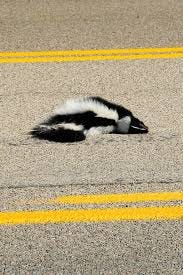
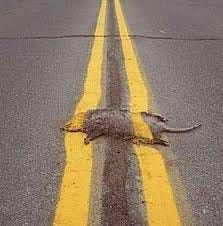
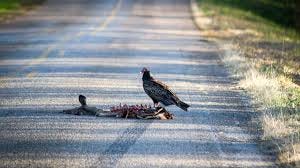
You can cook anything you want, but the rules strictly forbid you to buy anything in a store. Ya gotta cook actual roadkill. Here’s the link… Grab your fork and knife!
Thank you for reading.
I’ve published seven novels that appeal to all ages, blend humor with strong plots and memorable characters, flecked with pop-culture and endings you’d never expect. My work is found on all the platforms and my website, below.
MD in AZ




